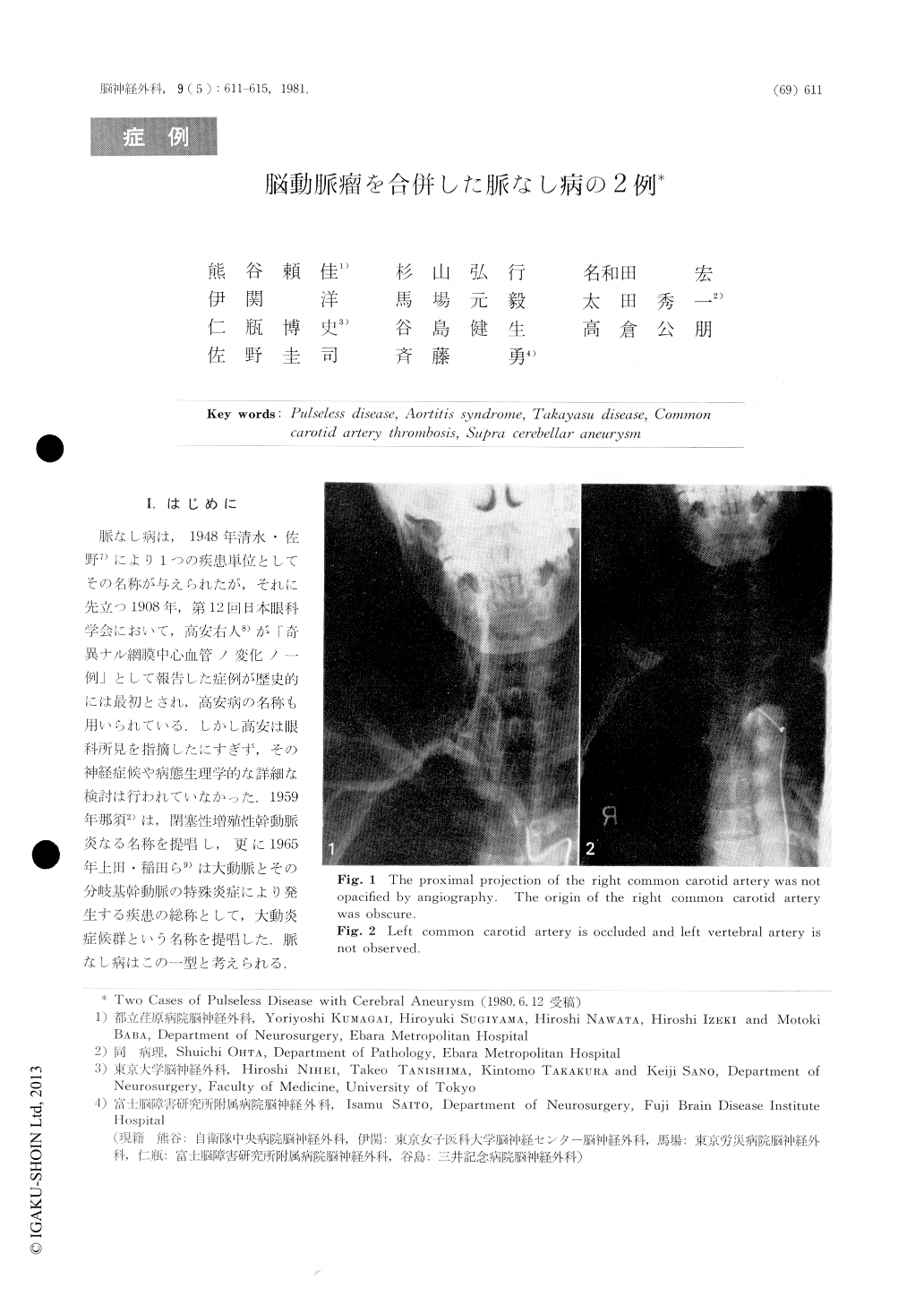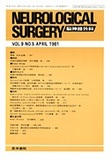Japanese
English
- 有料閲覧
- Abstract 文献概要
- 1ページ目 Look Inside
I.はじめに
脈なし病は,1948年清水・佐野7)により1つの疾患単位としてその名称が与えられたが,それに先立1908年,第12回日本眼科学会において,高安右人8)が「奇異ナル網膜中心血管ノ変化ノ一例」として報告した症例が歴史的には最初とされ,高安病の名称も用いられている,しかし高安は眼科所見を指摘したにすぎず,その神経症候や病態生理学的な詳細な検討は行われていなかった.1959年那須2)は,閉塞性増殖性幹動脈炎なる名称を提唱し,更に1965年上田・稲田ら9)は大動脈とその分岐基幹動脈の特殊炎症により発生する疾患の総称として,大動炎症候群という名称を提唱した,脈なし病は二の一型と考えられる.
一般に脈なし病に脳動脈瘤を合併することは極めて稀であるが,今回その2例を経験した.両側総頸動脈閉塞症に両側上小脳動脈動脈瘤を合併し,剖検の結果脈なし病と診断された症例と,脈なし病に脳底動脈分岐部動脈瘤を合併した症例である.そこでこれら症例の詳細とその動脈瘤の発生機序について若干の考察を加え報告する.
Two cases of pulseless disease with cerebral aneurysm were reported. Case 1, a 55-year-old woman, complained of attack of conscious disturbances, headache, nausea and right hemiparesis. She was admitted to the hospital after the episode of loss of consciousness. At the time of admission, her consciousness was clear but right palpebral ptosis, nuchal rigidity and photophobia were noted. The pulsation of both common carotid and radial arteries were difficult to palpate. The angiography revealed that her bilateral common carotid arteries and left vertebral artery were occluded and the presence of bilateral supracerebellar aneurysms.

Copyright © 1981, Igaku-Shoin Ltd. All rights reserved.


